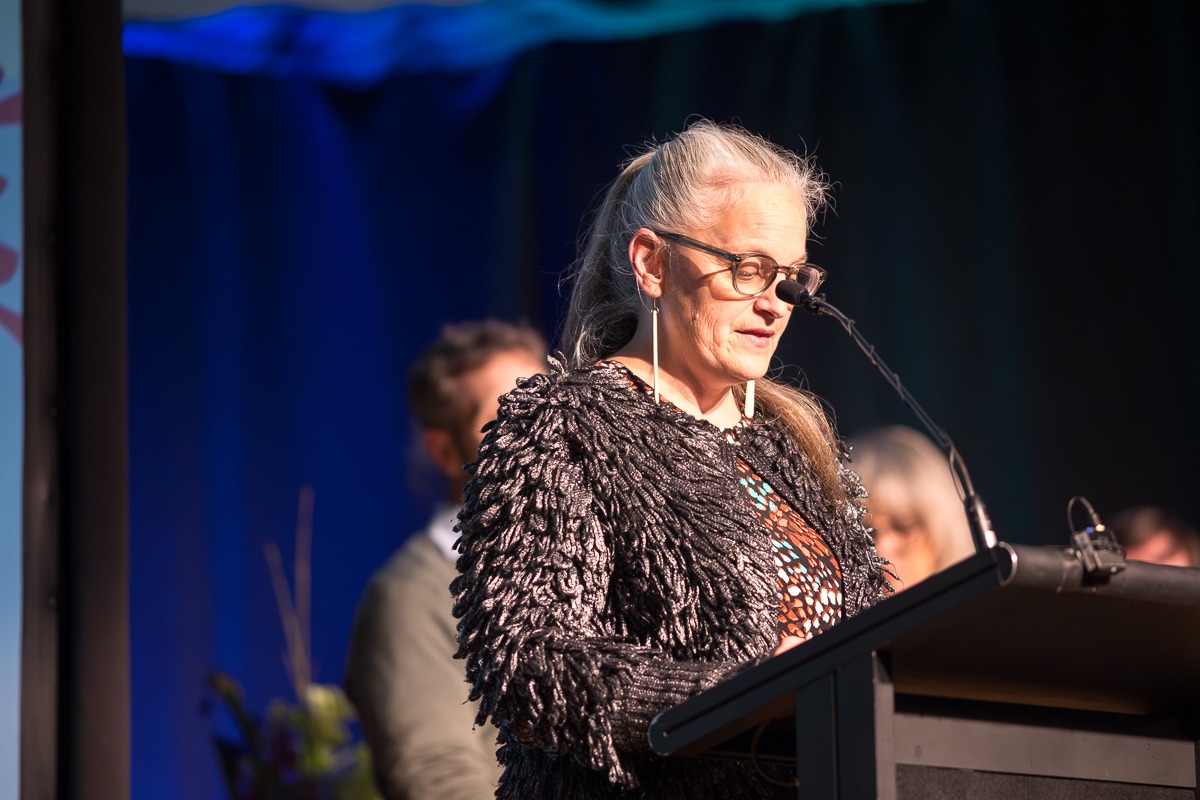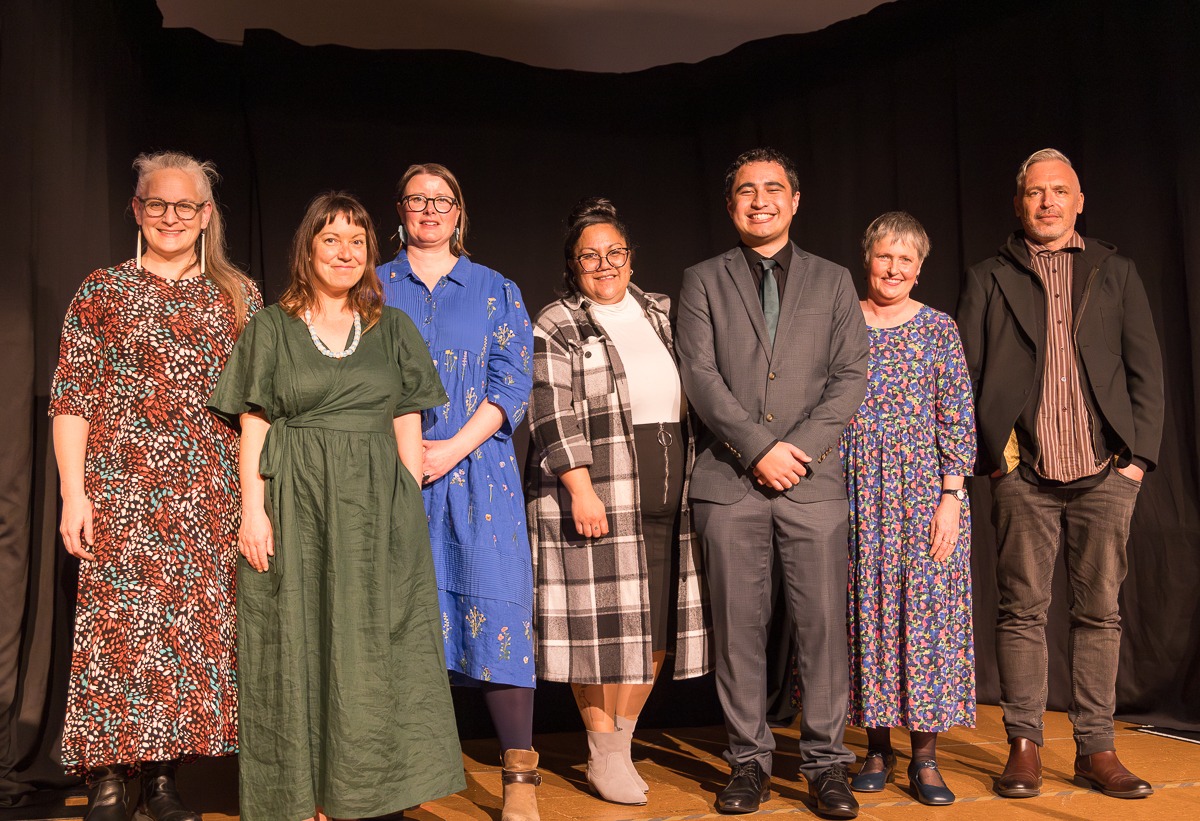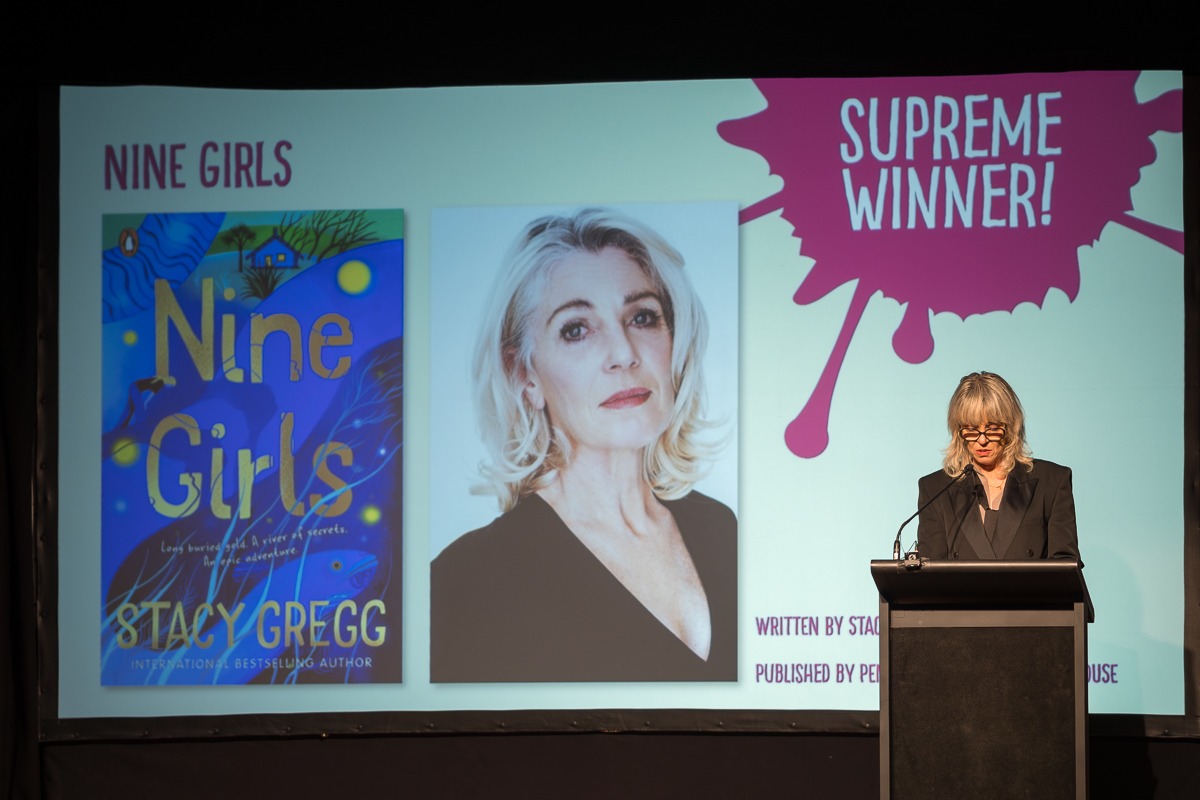Convenor of the 2024 NZCYA Book Awards Maia Bennett takes The Sapling behind the scenes on selecting the cream of this year’s crop of books for children and young adults.

On Wednesday evening the winners of the children’s and young adult books awards were announced. You can see all the category winners here. The judges ultimately crowned Stacy Gregg’s Nine Girls the Margaret Mahy Book of the Year, with convenor Maia Bennett noting that the book will “make a lasting contribution to Aotearoa’s national literature for children and young adults; and as such, deserves the accolade of supreme winner”.
The judges were Bennett (Ngāti Kahungunu, Ngāti Whakaue, Ngāti Pikiao, Ngāti Tūwharetoa), Belinda Whyte, Helen Wadsworth, Kitty Brown (Kāi Tahu, Waitaha, Kāti Mamoe, Ngāti Kahungunu), Mat Tait (Ngāti Apa ki te Rā Tō, Rangitāne o Wairau, Ngāti Kuia), Lawren Matrix (Tūhoe), Mihi Te Rina Henare (Ngāti Hine, Ngāti Porou, Te Whānau-ā-Apanui) and Quintin Te Maari (Ngāti Porou, Tūhoe, Ngāti Kahungunu ki Wairarapa). We asked Bennett how a panel of adults of diverse opinions came to select the best children’s books of the year.

The Sapling (TS): Can you tell us about how the judging process works? We’re imagining a gladiator-style battle, with each judge fighting for their favourites, but we imagine it involved a few more polite emails…
Maia Bennett (MB): At the start of the judging process, we met via Zoom to get to know each other and establish our ways of working. From the start we highlighted the importance of working collaboratively and cooperatively and evaluating books according to the judging criteria. Our aim was for consensus decision making.
Individually we read all the entries. We Zoomed fortnightly over the summer to discuss the books we were reading, and then made our individual longlists. All these books were discussed at a long meeting to decide finalists, and then we met again to decide category winners. There were certainly some robust discussions at our decision-making meetings but ultimately the panel reached consensus on all our decisions.
TS: The awards cover a huge array of books for very different audiences–from picture books to big non-fiction topics and complex issues in YA. How did you consider the needs of the readers in each category?
MB: It is a huge task but one that is very rewarding. From the start we were judging books against their category criteria, and part of that is always keeping the target audience in mind. As well as using our own judgement, we used our personal and work networks to access viewpoints and responses from tamariki and rangatahi. Plus books were sent to 75 schools to glean perspectives of young people from across the motu and over 500 reviews were supplied by them.
…books were sent to 75 schools to glean perspectives of young people from across the motu and over 500 reviews were supplied by them.
TS: Some of the judges are writers themselves, and New Zealand’s size means many of our writers know each other. Do you think those relationships have an impact on making decisions?
MB: New Zealand is a small country for sure. All the judges have some sort of connection to the literary community here, which is why they want to be part of this important mahi. Judges all bring their own experiences and preferences to the table and through the alchemy of consensus we achieve decisions we all support.

TS: There’s a noticeable trend for more picture books to be published in te reo Māori (as evident in the finalists in that category), but there are fewer junior and young adult titles on the market. What do you think we need to support or enable more books for older children to be written in or translated into Māori?
MB: It is so heartening to see more and more bilingual and te reo Māori texts for our youngest readers. We all know how important it is for our young people to be able to see themselves represented in books and as more people speak te reo Māori then I am sure there will be more books in te reo Māori produced for older tamariki and rangatahi. It would be great to see specific government funding to support this.
TS: What were your highlights in judging the awards? Any lowlights?
MB: The highlight is celebrating the amazing work our writers, illustrators and translators do. I am still amazed I had the opportunity to be a part of it! Twice!

TS: What’s your impression of the state of writing and publishing for children in New Zealand right now?
MB: I am so impressed with the quality of books being produced for our young people, there is such a depth and breadth of talent! It is so inspiring to see the work being produced by old hands and new talent.



